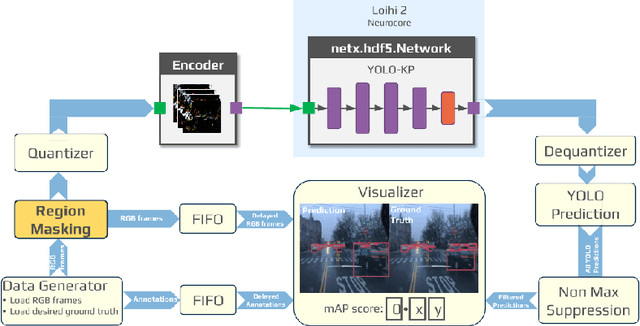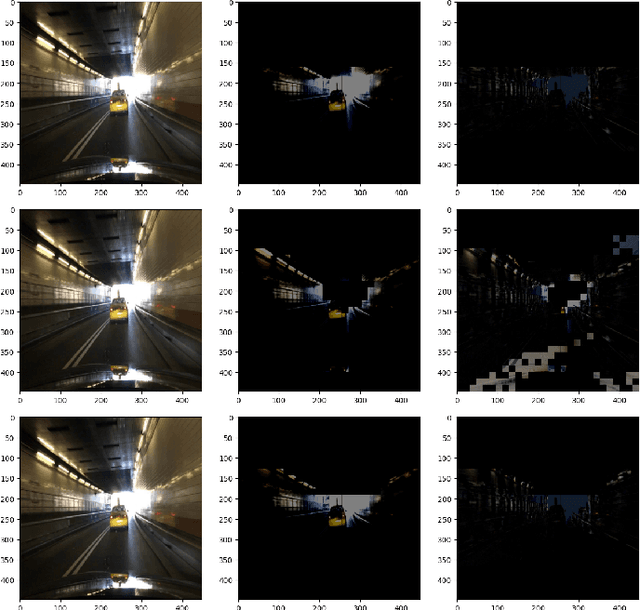Leobardo Campos-Macias
Region Masking to Accelerate Video Processing on Neuromorphic Hardware
Mar 21, 2025



Abstract:The rapidly growing demand for on-chip edge intelligence on resource-constrained devices has motivated approaches to reduce energy and latency of deep learning models. Spiking neural networks (SNNs) have gained particular interest due to their promise to reduce energy consumption using event-based processing. We assert that while sigma-delta encoding in SNNs can take advantage of the temporal redundancy across video frames, they still involve a significant amount of redundant computations due to processing insignificant events. In this paper, we propose a region masking strategy that identifies regions of interest at the input of the SNN, thereby eliminating computation and data movement for events arising from unimportant regions. Our approach demonstrates that masking regions at the input not only significantly reduces the overall spiking activity of the network, but also provides significant improvement in throughput and latency. We apply region masking during video object detection on Loihi 2, demonstrating that masking approximately 60% of input regions can reduce energy-delay product by 1.65x over a baseline sigma-delta network, with a degradation in mAP@0.5 by 1.09%.
Efficient Video and Audio processing with Loihi 2
Oct 05, 2023Abstract:Loihi 2 is an asynchronous, brain-inspired research processor that generalizes several fundamental elements of neuromorphic architecture, such as stateful neuron models communicating with event-driven spikes, in order to address limitations of the first generation Loihi. Here we explore and characterize some of these generalizations, such as sigma-delta encapsulation, resonate-and-fire neurons, and integer-valued spikes, as applied to standard video, audio, and signal processing tasks. We find that these new neuromorphic approaches can provide orders of magnitude gains in combined efficiency and latency (energy-delay-product) for feed-forward and convolutional neural networks applied to video, audio denoising, and spectral transforms compared to state-of-the-art solutions.
 Add to Chrome
Add to Chrome Add to Firefox
Add to Firefox Add to Edge
Add to Edge